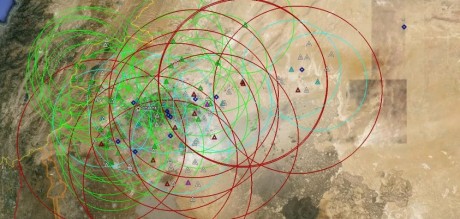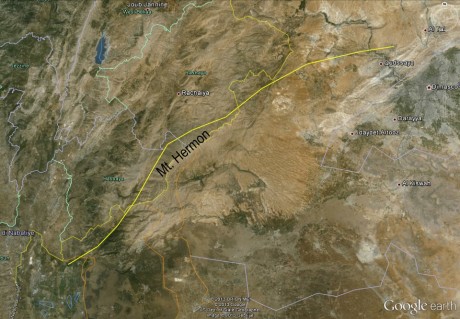Image may be NSFW.
Clik here to view. The Israeli air strike on a convoy weapons and military complex near Damascus, on the night between Jan. 29 and 30 has something in common with a similar air strike.
The Israeli air strike on a convoy weapons and military complex near Damascus, on the night between Jan. 29 and 30 has something in common with a similar air strike.
In 2007, Israeli Air Force bombers entered and egressed the Syrian airspace almost completely undetected by the Syrian air defenses.
On Sept. 6, 2007, ten F-15 and F-16 jets attacked a nuclear facility being built in Syria. The success of that mission, dubbed "Operation Orchard" was largely attributed to effectiveness of the Israeli Electronic Warfare platforms That supported the air strike and made the Syrian radars blind: some sources Believe That Operation Orchard saw the baptism of fire of the Suter airborne network system against Syrian radar systems from some ELINT aircraft.
It is quite likely that Israel's EW capabilities, most probably further improved since 2007 (someone speculated Israel is capable to inject malware from its F-16s), have played a major role in the recent strike that hit a target located only 5 kilometers from Assad's headquarters.
Although the current status of the SAM (Surface to Air Missile) coverage around Damascus is quite difficult to assess, since some of the batteries protecting the capital town may have been hit by the rebels sabotaged or activity, the area is still believed to be heavily defended by several Soviet-made anti-aircraft system (even if most of all not so up to date).
The following image comes from 2010's survey of the Syrian SAM deployment, published on the interesting Sean O'Connor's IMINT & Analysis blog.
Although probably outdated, it still gives an idea of how crowded SAM systems of the surrounding area is Damascus.
Image may be NSFW.
Clik here to view. In June 2012, Syrian anti-aircraft artillery battery downed a Turkish Air Force RF-4E Phantom that had violated Syrian airspace at low altitude the over the Mediterranean Sea, thus proving Damascus That's air defense are still somehow dreadful for enemy fighter jets.
In June 2012, Syrian anti-aircraft artillery battery downed a Turkish Air Force RF-4E Phantom that had violated Syrian airspace at low altitude the over the Mediterranean Sea, thus proving Damascus That's air defense are still somehow dreadful for enemy fighter jets.
Even though EW coverage (embedded in the strike package or supporting it from distance) has probably Contributed to the successful outcome of the air strike making the bombers somehow "stealthy", another key factor in the attack was the relatively short distance of the target from the border area and the local orography. That has helped the Israeli jets flying at low altitude Achieving some terrain masking .
The following image, drawn by The Aviationist contributor's Giuliano Ranieri, shows a possible ingress route that exploits the terrain masking provided by the Mt Heron and a scarcely populated area overflies.
It's just a hypothesis, still, likely, not too far from the route actually flown by the Israeli fighters.
Image may be NSFW.
Clik here to view.
Some videos have been uploaded to Liveleak allegedly showing the Israeli fighter over Damascus at dawn. The one you can watch here has nothing to do with the air strike though: the type of contrails, the type of formation and, above all, the altitude of the planes depicted in the footage are not consistent with the IAF raid.
SEE ALSO: THE BONEYARD: Where Air Force birds go to die >
SEE ALSO: The Military & Defense Facebook page for updates >
Please follow Military & Defense on Twitter and Facebook.
